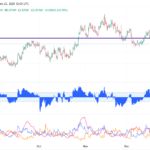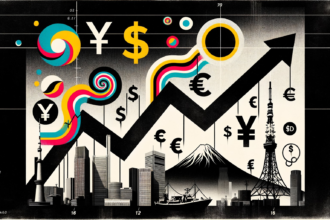The US has intensified its trade war into a currency war by apparently seeking to weaken the dollar to boost exports. It is a different matter that, as the global reserve currency, there are some limits to the dollar’s steep devaluation. An overly devalued dollar threatens financial stability and undermines investor confidence, especially in US Treasury bonds. China, with its strategic RMB depreciation, has escalated the stand-off.
Meanwhile, the dollar’s credibility and reserve status faces mounting scrutiny, compounded by America’s persistent trade deficit, which ironically also underpins its reserve currency status. The ongoing problem spills over globally, posing acute challenges for emerging economies like India. Capital flight, inflation, and complex policy dilemmas are growing risks. As the world navigates US-driven instability, it becomes vital to decode Washington’s devaluation playbook and craft India’s strategic response to weather any currency storm.
Devaluation strategy
Trump’s devaluation strategy is a calculated blend of monetary influence, trade aggression, and geopolitical signalling, designed to reposition the US dollar as a tool of economic statecraft. First, Trump persistently urged the Fed to cut interest rates, arguing that a strong dollar hurts US export competitiveness, and promotes imports and debt. His vocal campaign influenced market expectations, weakening the dollar.
Second, the administration floated the idea of direct currency market intervention, such as selling dollars and buying foreign currencies to deliberately induce depreciation. Though not executed, this policy option revived historical precedents like the 1985 Plaza Accord, when the US coordinated with G5 nations to weaken the dollar and correct structural trade imbalances. The discussion has signalled a certain intent to financial markets.
Third, Trump’s reciprocal tariff gambit created global market uncertainty, triggering financial market crash(s), associated capital outflows amid investor repositioning, and currency volatility. These conditions undermined the dollar’s relative strength, aligning with his devaluation ambitions.
Fourth, Trump is planning to leverage ‘exchange rate diplomacy’ to pressure trade partners into negotiating better terms. This was part of a larger protectionist toolkit to reverse trade deficits, revive US manufacturing, and disrupt status-quo trade alignments. While strategically bold, this multifaceted approach carried risks, such as inflation, retaliation from trading partners, and erosion of trust in the dollar’s global reserve status. The Chinese intent and actions against reciprocal tariffs are a signal that the road is not that easy for US, as anticipated.
India’s playbook
The depreciation of the dollar, driven by Trump’s aggressive tariff policies and shifting global financial dynamics, carries broad and complex implications for India, spanning trade, investment, debt management, and monetary strategy. As the dollar weakens amid US protectionism and global capital realignments, Indian policymakers must adopt a nuanced, sector-specific approach to harness emerging opportunities while mitigating vulnerabilities.
In trade, the immediate effect is adverse for Indian exports. The US is India’s largest export destination, and a weaker dollar reduces the price competitiveness of Indian goods and services in that market. This is especially concerning for the IT and ITeS sector, which derives over 60 per cent of its revenue from US-based clients. Indian exporters may face billing pressures, renegotiations, and shrinking margins, especially in sectors like engineering, pharma and textiles, weakening trade surplus with the US.
However, if the euro, yen, or pound appreciate more than the rupee, exports to Europe and Japan could become more competitive, partially offsetting US-related losses.
On the import front, the situation is more favourable. Crude oil, which constitutes over 20 per cent of India’s import basket and is priced in dollars, becomes cheaper in rupee terms as the dollar weakens. This lowers the import bill, eases inflation, and strengthens macroeconomic indicators like the current account balance. Imports of capital goods, high-end US technology, and semiconductor components may also become more affordable, supporting the objectives of initiatives like Make in India and PLI. Still, imports from Europe or China could become costlier if those currencies gain more than the rupee, creating mixed results.
In terms of external debt, Indian corporations and financial institutions holding significant dollar-denominated liabilities, estimated at over $717 billion by March 2025, benefit from lower debt-servicing costs and currency translation gains. This improves corporate balance sheets and potentially boosts credit ratings. However, a broadly weakening dollar could trigger capital outflows from emerging markets, increasing borrowing costs and risk premiums. Companies may thus face higher refinancing risks and could turn to domestic debt or sovereign-backed instruments as alternatives.
The services sector and remittance economy are also impacted. Dollar depreciation lowers the rupee value of inward remittances, which exceeded $129 billion in 2024, affecting household consumption in remittance-heavy states like Kerala, Punjab, and Andhra Pradesh. Simultaneously, the RBI experiences valuation losses on its dollar-heavy reserves. To buffer against this, reserve diversification into gold, euro, yen, yuan, and fostering bilateral rupee settlements, especially with Russia and the UAE, becomes critical for de-dollarisation and financial sovereignty.
Lastly, capital markets may witness FII outflows amid portfolio rebalancing, leading to equity volatility and rising bond yields. Infrastructure projects relying on foreign currency loans face rising currency mismatch risks, underlining the need to develop robust hedging tools and deepen domestic bond markets.
Way forward
India should respond strategically by enhancing trade diversification, boosting rupee-trade arrangements, bolstering domestic bond markets, and augmenting forex buffers. As the global order shifts toward currency multipolarity, India’s economic resilience and strategic foresight will determine how well it adapts and asserts autonomy in the emerging financial architecture.
Ram is Professor/Head, and Renni is Ph.D Scholar, IIFT, New Delhi. Views are personal
Published on April 15, 2025





















